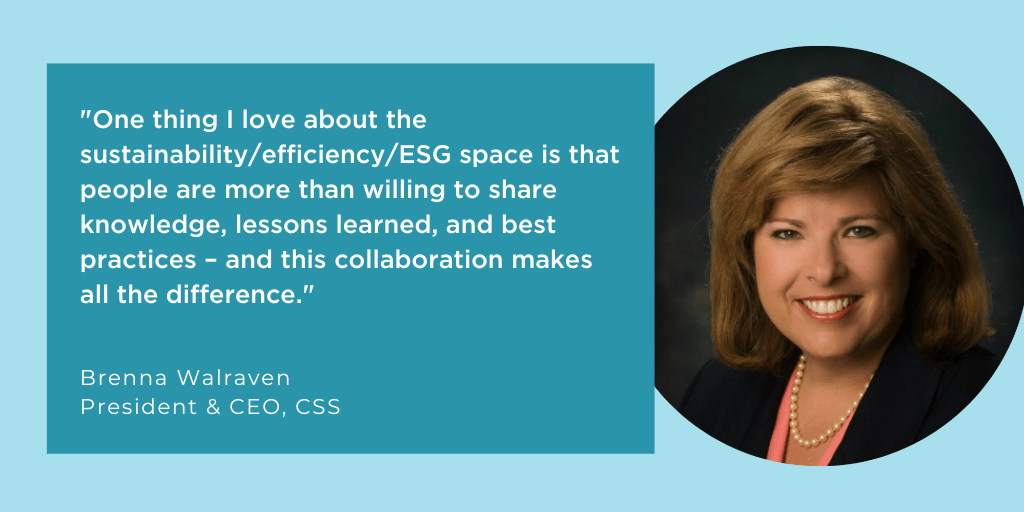IMT partners with organizations of all shapes and sizes in its quest to transform the places where we collectively live, work, and play into restorative, healthy, resilient, and sustainable spaces. Our goal is to collectively drive greater demand for better buildings and to co-create and deploy the solutions that fulfill that demand.

Corporate Sustainability Strategies (CSS) is a founding corporate supporter of IMT and is an independent commercial real estate sustainability consulting firm. We chatted with CSS’ President and CEO, Brenna S. Walraven, BOMA Fellow, BOMI-HP®, CPM® , RPA® about the importance of collaboration amongst industry leaders in fighting the climate crisis through better buildings.
How does collaboration drive your business?
Brenna Walraven: Collaboration is critical. One thing I love about the sustainability/efficiency/ESG space is that people are more than willing to share knowledge, lessons learned, and best practices – and this collaboration makes all the difference. It’s the ability to connect with other leaders and partner with other organizations that allows us to scale and better serve our clients – too it’s what makes our work so rewarding and fun!
What industry trends are you most watching now?
Walraven: Public policy, disclosure framework evolution and regulatory-related changes are front and center for us and our clients. How these changes connect with decarbonization and our clients’ interest in carbon neutrality, has gone from “not interested” three years ago to “completely engaged” now. The SEC’s proposed rule changes (and even additional rules being considered), the Sustainable Finance Disclosure Regulation (SFDR), Task Force on Climate-Related Financial Disclosure (TCFD)… there are too many to name and for most of our clients, these present challenges with “how to understand and digest” and more importantly understand the right way to address and prepare for these changes.

What are the market opportunities you see that enable you to better serve clients as demand grows for better buildings?
Walraven: The growing interest in ESG more broadly, to include high-performance, sustainable, healthier, safer, and more resilient buildings allow us to help organizations define for themselves what ESG and better buildings actually look like. Because companies, communities, portfolios, and buildings are all unique, we see the integration of sustainability/ESG best practices as an opportunity to not only create value but also have a meaningful impact environmentally, socially, and financially.
How do you utilize and respond to building performance and climate policy in your work?
Walraven: Mainly we’re helping our client navigate the complexity, particularly given that the level of change has been staggering. Our clients appreciate our ability to not just provide insights, perspective, and expertise, but also expediency. We help them move more nimbly, and more quickly and yet do so with more confidence to work towards and achieve their goals.
What is one of the biggest untapped opportunities in your industry when it comes to addressing the climate crisis via buildings?
Walraven: Better understanding of what climate-related physical and transition risks actually are and mean for real estate investors, owners and operators. It’s one thing to know there are growing risks, and even to have software solutions to assess those risks, but it’s quite another thing to know how to respond to the information and integrate it into both business processes, execution, and properties themselves to garner greater resilience.
IMT’s corporate engagement program provides financial support to IMT to serve as an ideation lab for next-generation public policies and business practices while further deploying IMT’s expertise in the building performance landscape to partners. IMT’s corporate supporters receive exclusive benefits including regular analysis on the building performance landscape and access to IMT’s market-leading expertise.
